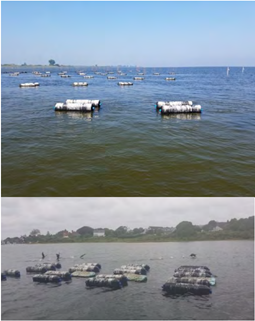Operational Plans for Aquaculture Gear
Seed grown in prohibited areas
In accordance with the National Shellfish Sanitation Program Model Ordinance, Chapter VI .03 Each aquaculture site that cultures seed in waters classified as prohibited or unclassified shall have a written operational plan. Operational Plans must be approved by the DoAG prior to implementation and are a requirement of the permit and licensing process.
- The oyster seed size is no more than 2.5” length
Link to operational plan outline
Aquaculture gear that attracts birds or mammals
In accordance with the National Shellfish Sanitation Program Model Ordinance (NSSP-MO), Chapter VI .04 Each aquaculture site that the Authority determines may attract sufficient birds and/or mammals that their waste presents a human health risk shall have a written operational plan. Operational Plans must be approved by the DoAG prior to implementation and are a requirement of the permit and licensing process.
If aquaculture gear attracts birds or mammals, their waste can present a potential human health risk. The DoAG has not currently permitted floating gear in Approved or Conditionally Approved shellfish growing areas in Connecticut, where shellfish are harvested for direct human consumption. However, other states have documented birds landing on and depositing large amounts of fecal matter on floating gear (see photo taken in New York below). A Campylobacter outbreak was associated with Rhode Island oysters that were grown in floating gear in 2021. The Connecticut DoAG, again, has not permitted floating gear in areas where shellfish are directly harvested for consumption. However, the operational plan provides a framework to potentially start using floating gear in Connecticut with controls that prevent public health risks from bird or mammal attraction, and without disrupting public use and navigation in Long Island Sound.
Link to operational plan outline

Photo credit: NYDEC published by ECSGA

